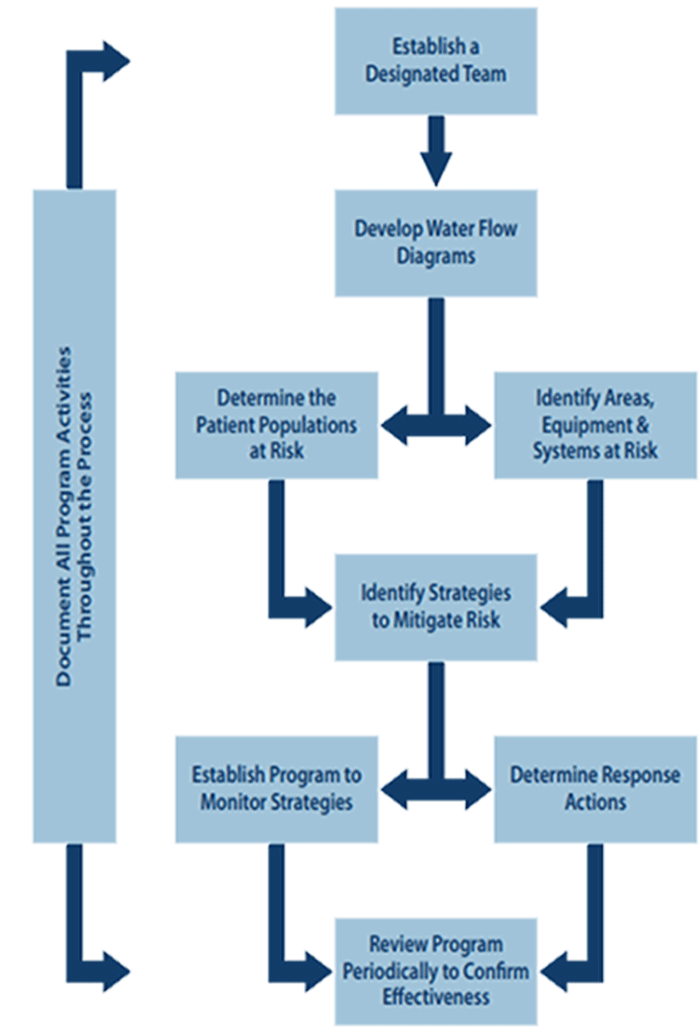Seven steps to creating a water management program
ASHRAE Standard 188: Legionellosis: Risk Management for Building Water Systems establishes minimum legionellosis risk management requirements for building water systems. Creating a water risk management plan can help hospitals comply with this standard and mitigate risk as much as possible.
Here are 7 steps for creating a water risk management plan.
1. Create a team. ASHRAE 188 requires a team — called the "Designated Team" — to write water management programs and procedures, and to oversee the implementation of the water risk management plan. Who should be at the table? A hospital executive, facility manager and infection preventionist should be on the team. Consider adding team members from nursing management, occupational and environmental safety or other areas.

2. Map the water system. The Designated Team should develop a water system flow diagram of the entire building's water system. This map will help the team identify potential hazard conditions and high-risk patient care areas. You can consider using up-to-date plumbing drawings if available, but those are often too complicated for the team to use for risk assessments. Simplified drawings are often more practical. A helpful example can be found in the publication Water Management in Health Care Facilities: Complying with ASHRAE Standard 188.
3. Identify risks. The Designated Team should systematically evaluate the water flow diagram to identify potential risks. Look for areas where there is slow or stagnant water. Consider areas with patient populations that have reduced immunity levels. Identify control locations and limits. It is important to identify both the patient populations at risk and the equipment and systems at risk to get a full picture.
4. Develop strategies to mitigate the risks. The Designated Team should use a risk management approach to identify control locations and limits. Control limits could refer to characteristics such as water flow rate, water temperature, disinfectant residual, concentration of pathogen or any other identified measurements.
5. Monitor and respond. The Designated Team must develop monitoring procedures to keep an eye on the control limit data. If there are deviations outside of the set control limits, the Designated Team can consider response methods, such as disinfectant, heating, cooling, filtering or flushing water. A full list of treatment options is available in the Water Management in Health Care Facilities publication. The team should develop standard operating procedures to help reduce risks.
6. Review periodically. The Designated Team should create procedures that will confirm that the risk management plan is working. This confirmation can be as simple as a spreadsheet that shows specific steps of the water management plan that are reviewed with the team whenever anomalies occur.
7. Document, document, document. From the first step through the last, all activities should be documented. Documentation should include all parts of the plan, and must be maintained and kept current.




